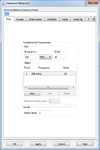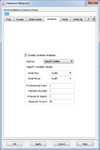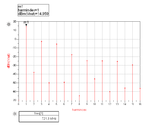Coust
Member level 2
Hello everybody! I'm working with this oscillator in ADS and I need some help in harmonic balance simulation:


Those square blocks are MOSFETs and the right part of the circuit is just a buffer to isolate the tank part from my probes.
The problem I have with this circuit in HB simulation is the non-convergence of my oscillator: I get the matrix is singular error.
It works fine in transient analysis:

But I would like to check it in HB to make sure that the oscillating frequency is correct. Do you think that an HB simulation is more accurate than the transient one? Or the way I got the frequency is good enough in this case?
Any advice will be apreciated. Ty very much!


Those square blocks are MOSFETs and the right part of the circuit is just a buffer to isolate the tank part from my probes.
The problem I have with this circuit in HB simulation is the non-convergence of my oscillator: I get the matrix is singular error.
It works fine in transient analysis:

But I would like to check it in HB to make sure that the oscillating frequency is correct. Do you think that an HB simulation is more accurate than the transient one? Or the way I got the frequency is good enough in this case?
Any advice will be apreciated. Ty very much!








